Hyundai i10 vs Kia Niro – Differences & prices compared
Two cars, one duel: Hyundai i10 meets Kia Niro.
Which one wins in performance, efficiency and value for money? Find out now!
Costs and Efficiency:
Price and efficiency are often the first things buyers look at. Here it becomes clear which model has the long-term edge – whether at the pump, the plug, or in purchase price.
Hyundai i10 has a clearly advantage in terms of price – it starts at 14600 £, while the Kia Niro costs 29100 £. That’s a price difference of around 14572 £.
Fuel consumption also shows a difference: Kia Niro manages with 2.40 L and is therefore significantly more efficient than the Hyundai i10 with 4.90 L. The difference is about 2.50 L per 100 km.
Engine and Performance:
Under the bonnet, it becomes clear which model is tuned for sportiness and which one takes the lead when you hit the accelerator.
When it comes to engine power, the Kia Niro has a convincingly edge – offering 180 HP compared to 90 HP. That’s roughly 90 HP more horsepower.
In acceleration from 0 to 100 km/h, the Kia Niro is a bit quicker – completing the sprint in 9.90 s, while the Hyundai i10 takes 11.40 s. That’s about 1.50 s faster.
In terms of top speed, the Kia Niro performs hardly perceptible better – reaching 185 km/h, while the Hyundai i10 tops out at 175 km/h. The difference is around 10 km/h.
There’s also a difference in torque: Kia Niro pulls noticeable stronger with 265 Nm compared to 172 Nm. That’s about 93 Nm difference.
Space and Everyday Use:
Whether family car or daily driver – which one offers more room, flexibility and comfort?
Both vehicles offer seating for 5 people.
In curb weight, Hyundai i10 is convincingly lighter – 996 kg compared to 1474 kg. The difference is around 478 kg.
In terms of boot space, the Kia Niro offers significantly more room – 451 L compared to 252 L. That’s a difference of about 199 L.
In maximum load capacity, the Kia Niro performs distinct better – up to 1445 L, which is about 395 L more than the Hyundai i10.
When it comes to payload, Kia Niro slight takes the win – 466 kg compared to 423 kg. That’s a difference of about 43 kg.
Who comes out on top?
Overall, the Kia Niro shows itself to be is largely superior and secures the title of DriveDuel Champion.
It convinces with the more balanced overall package and proves to be the more versatile choice for everyday use.
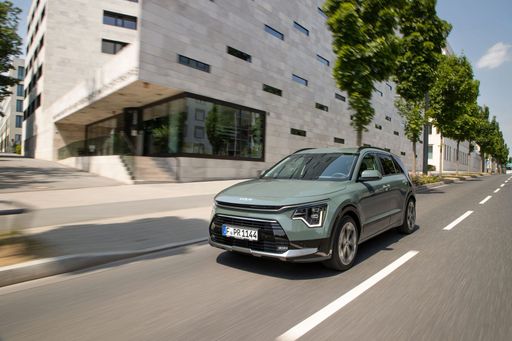 @ Kia Corporation
@ Kia Corporation
Kia Niro
Hyundai i10
The Hyundai i10 is a cheeky city car that squeezes big-car confidence into a pocket-friendly package, carving through tight streets with surprising composure and sensible practicality. For buyers after low fuss, sensible equipment and wallet-friendly running costs, it's a smart, no-nonsense pick that makes sense whether you're a first-time driver or need a reliable second car.
details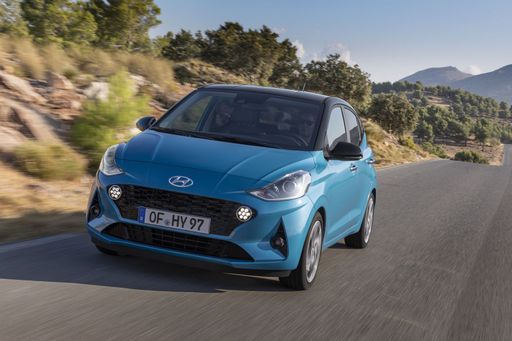 @ Hyundai Motor Company
@ Hyundai Motor Company
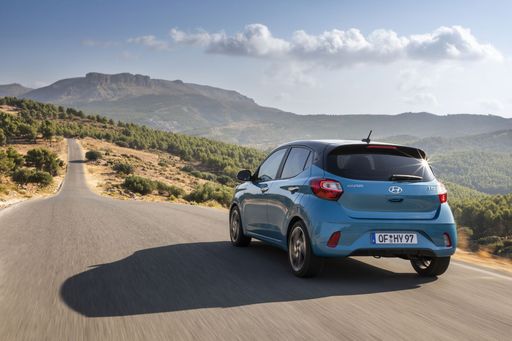 @ Hyundai Motor Company
@ Hyundai Motor Company
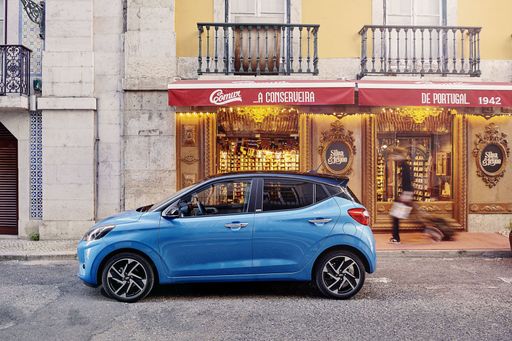 @ Hyundai Motor Company
@ Hyundai Motor Company
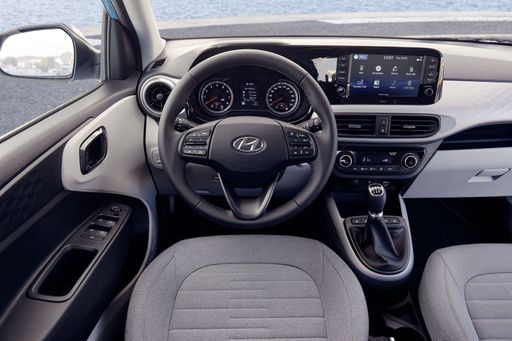 @ Hyundai Motor Company
@ Hyundai Motor Company
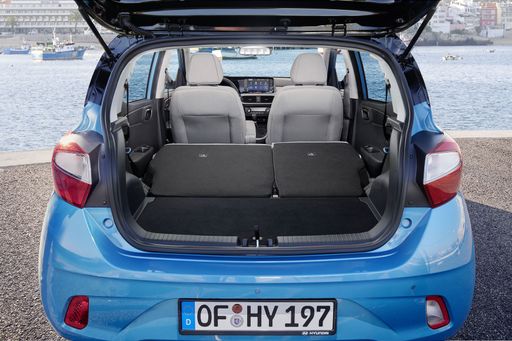 @ Hyundai Motor Company
@ Hyundai Motor Company
Kia Niro
The Kia Niro blends clever packaging and modern styling into a compact crossover that’s refreshingly sensible for daily life. It’s comfortable, economical and packed with user‑friendly tech, so if you want a fuss‑free family car with a touch of green credibility, the Niro is worth a test drive.
details @ Kia Corporation
@ Kia Corporation
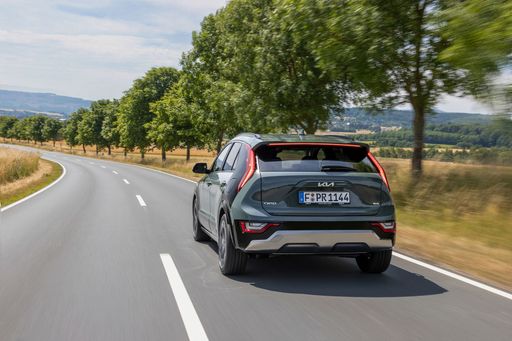 @ Kia Corporation
@ Kia Corporation
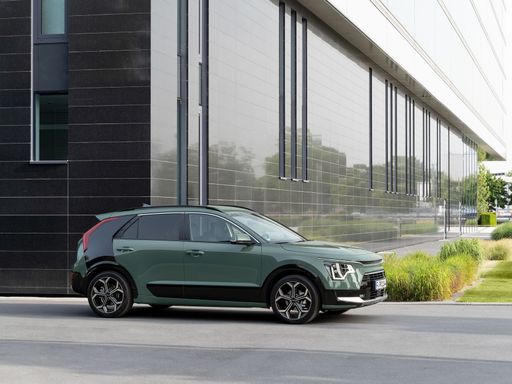 @ Kia Corporation
@ Kia Corporation
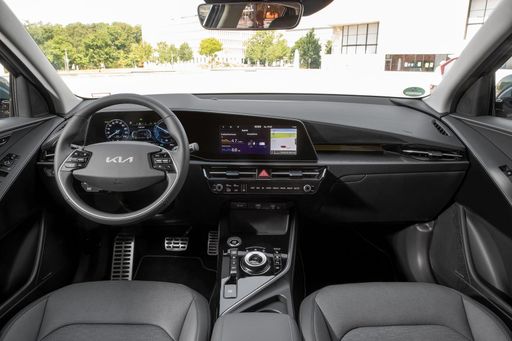 @ Kia Corporation
@ Kia Corporation
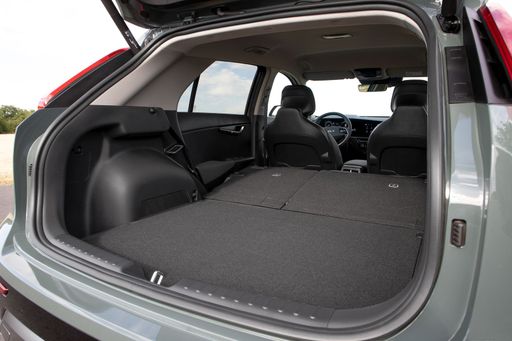 @ Kia Corporation
@ Kia Corporation
 @ Hyundai Motor Company
@ Hyundai Motor Company
|
 @ Kia Corporation
@ Kia Corporation
|
|
|
|
Costs and Consumption |
|
|---|---|
|
Price
14600 - 19000 £
|
Price
29100 - 38600 £
|
|
Consumption L/100km
4.9 - 5.5 L
|
Consumption L/100km
2.4 - 4.9 L
|
|
Consumption kWh/100km
-
|
Consumption kWh/100km
-
|
|
Electric Range
-
|
Electric Range
57 - 62 km
|
|
Battery Capacity
-
|
Battery Capacity
1.3 - 11.1 kWh
|
|
co2
110 - 124 g/km
|
co2
53 - 111 g/km
|
|
Fuel tank capacity
36 L
|
Fuel tank capacity
37 - 42 L
|
Dimensions and Body |
|
|---|---|
|
Body Type
Hatchback
|
Body Type
SUV
|
|
Seats
4 - 5
|
Seats
5
|
|
Doors
5
|
Doors
5
|
|
Curb weight
996 - 1099 kg
|
Curb weight
1474 - 1594 kg
|
|
Trunk capacity
252 L
|
Trunk capacity
348 - 451 L
|
|
Length
3670 - 3675 mm
|
Length
4420 mm
|
|
Width
1680 mm
|
Width
1825 mm
|
|
Height
1480 - 1483 mm
|
Height
1545 mm
|
|
Max trunk capacity
1050 L
|
Max trunk capacity
1342 - 1445 L
|
|
Payload
344 - 423 kg
|
Payload
466 kg
|
Engine and Performance |
|
|---|---|
|
Engine Type
Petrol
|
Engine Type
Full Hybrid, Plugin Hybrid
|
|
Transmission
Manuel, Automatic
|
Transmission
Automatic
|
|
Transmission Detail
Manual Gearbox, Automated Manual
|
Transmission Detail
Dual-Clutch Automatic
|
|
Drive Type
Front-Wheel Drive
|
Drive Type
Front-Wheel Drive
|
|
Power HP
63 - 90 HP
|
Power HP
138 - 180 HP
|
|
Acceleration 0-100km/h
11.4 - 18.4 s
|
Acceleration 0-100km/h
9.9 - 11.4 s
|
|
Max Speed
143 - 175 km/h
|
Max Speed
170 - 185 km/h
|
|
Torque
93 - 172 Nm
|
Torque
265 Nm
|
|
Number of Cylinders
3 - 4
|
Number of Cylinders
4
|
|
Power kW
46 - 66 kW
|
Power kW
102 - 132 kW
|
|
Engine capacity
998 - 1197 cm3
|
Engine capacity
1580 cm3
|
General |
|
|---|---|
|
Model Year
2024
|
Model Year
2025
|
|
CO2 Efficiency Class
C, D
|
CO2 Efficiency Class
C, B
|
|
Brand
Hyundai
|
Brand
Kia
|
Is the Hyundai i10 offered with different drivetrains?
The Hyundai i10 is offered with Front-Wheel Drive.
The prices and data displayed are estimates based on German list prices and may vary by country. This information is not legally binding.
